The return of the 1990s classic trashcam that, despite being what it was, the Vivitar Ultra Wide & Slim became a cult classic in the rise of the toy camera movement. And while the original Vivitar run ended, and the Sproketheadz version had some serious troubles, in 2022, a new version came to the market. Produced by Hong Kong firm RETO, the RETO Ultra Wide & Slim rebirthed the classic and is probably one of the closest versions of the original. It’s all plastic, light, and has a particular flare for the strange. But if you missed the boat on the original, this camera might be the one you’re looking for. For ease of typing, I’ll refer to the RETO Ultra-Wide & Slim as RUWS for the remainder of this review.
Camera Specifications
Make: RETO
Model: Ultra Wide & Slim
Type: Viewfinder
Format: 135 (35mm), 36x24mm
Lens: Fixed, Ultra-wide Lens F=22mm 1:11 (Two Elements, Acrylic)
Shutter: Fixed, Leaf-Type, 1/125″
Dimensions (WxHxD): 100x59x28mm
Weight: 68.8g
Year of Manufacture: 2022-Present
Background
The 1990s were a weird time for photography, in addition to significant advances in digital photographic technologies and the beginnings of digital entrance into the consumer market. There were also some relatively advanced and solid-performing consumer entry-level SLRs. And then there were trashcams. The term trashcam was applied to those cameras with cheap build qualities and often were not all they appeared to be. Trashcams have been around since the late 1970s, often made from plastic, almost entirely plastic, even the lenses. The focus was fixed, usually helped by a small aperture, and the shutter was often fixed to a single speed. These often were made in mass factories in mainland China and carried historic brandings like Ansco, Argus, and Bell & Howell. Others take plays off existing camera brands; Olympia is a prime example. This is where in 1972, Sunny Industries Limited entered the market, established in Hong Kong and with factories in mainland China; Sunny changed their name to Sunpet Industries Ltd in 1980. Sunpet produced a pile of these trashcams, 35mm fake panoramic, 110 cameras and even a 126 (Instamatic) camera. But in the mid-1990s, they created an ultrasmall 35mm camera that stood out from other trashcams. First, it had a two-tone appearance with a fake chrome shutter release and a two-element plastic lens with a viewing angle of 22mm. They also applied the name Vivitar to their camera, and the Vivitar Ultra-Wide & Slim or VUWS was born. This was around the same time that the Lomography movement was starting to take off, and the idea of these trash or toy cameras were starting to become popular among artists and similar-minded photographers and bucking the trend of sharpness and perfection. This was also the days before the Internet community started taking off; I first learned of the VUWS from the Film Photography Project around their second year; I mean, if you’ve been listening since the beginning, you’ll know the sound clip (Ultra-Wide and Sliiiiiim, which is among the many FPP clips that live rent-free in my brain). The VUWS reached cult status in the 2000s and 2010s as an inexpensive toy camera that produced funky and quirky images that fit the whole ‘Lomography’ look. The ultra-wide lens, small size, 35mm format, and optical qualities with a surprisingly sharp centre with a pleasing fall-off and corner vignetting. The VUWS appeared in the Sunpet catalogue as late as 2014, but most agree that the production ended in 2017. The Japanese firm, Powershovel got their hands on the moulds and design for the VUWS and produced a new version of the camera called the SuperHeadz. They built their camera in different colours and names, such as the black-coloured “Slim Black Devil.” Those who used the SuperHeadz version saw some significant issues between the new model and the original VUWS. The biggest is that you can only shoot 24-exposure rolls; once you get past 25, the camera starts to jam, and the second is that some of the finishes are degraded. This is mostly noted with the yellow and white versions, where grim can collect, and the finish can get sticky with most models. Powershovel quietly discontinued the camera at some point, but Hong Kong firm RETO got their hands on the camera design and 2022 released the RETO Ultra-Wide & Slim in 2021 and began shipping in 2022. RETO returned to a near-perfect copy of the original VUWS, going with a better outer body material but lacking the two-tone appearance, save for that faux-chrome shutter release. No strange coating on the body but multiple colour options. It also appears they fixed the film advance issue, and you can use 36-exposure rolls. And the image quality is close to the original, and it costs less than what the original versions are going for on the secondary market.

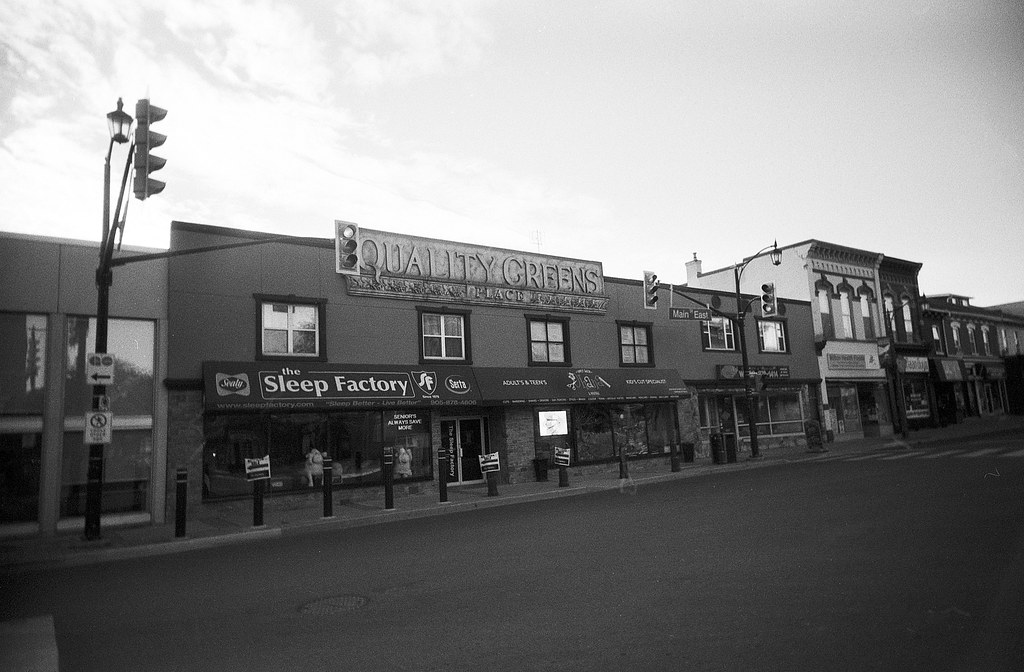
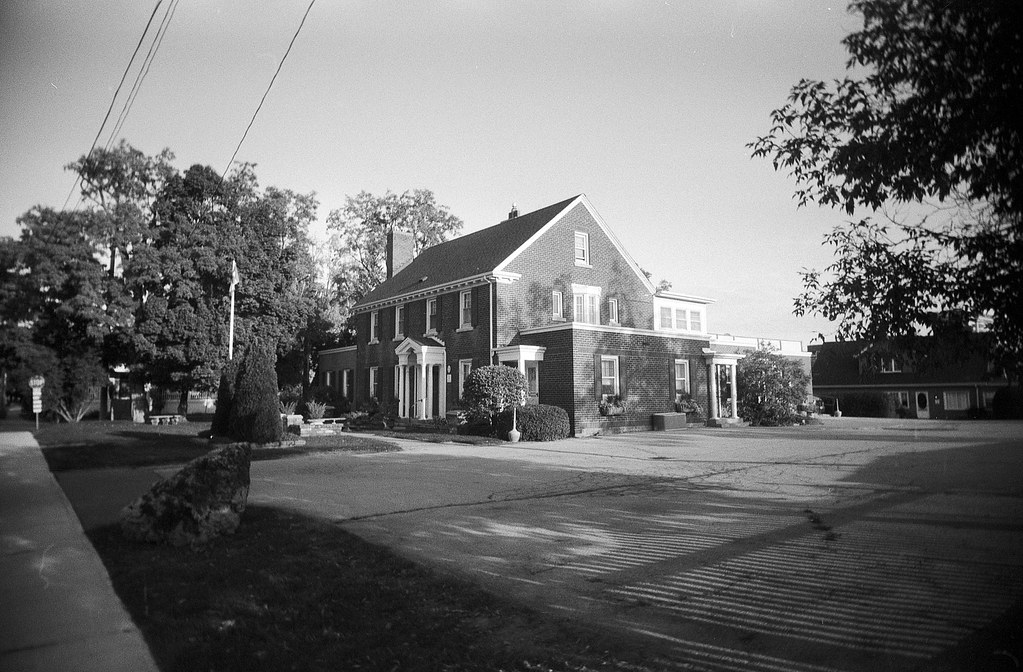

Impressions
The RUWS both looks and feels cheap; it’s all plastic, and I’m pretty sure there is not a single bit of metal in the entire construction of this camera. And if you could not see the camera, you probably think that you were not even holding a camera; it is that small and that light. But the build quality of the camera is among its selling points. The small and slim nature of the camera means it does not take up much space in your kit and can be easily pocketed and carried around. Seriously, you won’t even know you have the camera on you unless you see the thing. Thankfully there is a wrist strap in the box so that it can easily dangle there and be swung up to take the shot. And you don’t have to stick with the plain and boring charcoal colour; the camera is available in multiple colours for an added splash. Now, unlike the original, which presented a two-toned appearance, the RUWS is a single colour. Despite the small size, the camera is easy to hold with a slight grip on one side, and the lens is surrounded by a thin bezel which means you know when your fingers are getting close to blocking off the lens. For controls, the RUWS is simple, with only the top faux-chrome shutter release, which is fairly big and easy to spot with a satisfying shutter click. The film advance is a dial-style advance, similar to what you would find on an Olympus Trip 35, although it is located on the bottom of the camera. While it works, it’s not ideal for colder weather, but wearing bulky gloves with the RUWS might not be the best idea. The rewind knob and release are also located on the bottom plate; they work, but the knob feels flimsy, and there have been a couple of times when I thought it would snap. Thankfully the back door has a separate release latch. But for what the camera is, the build quality, while it has its flaws, is decent.

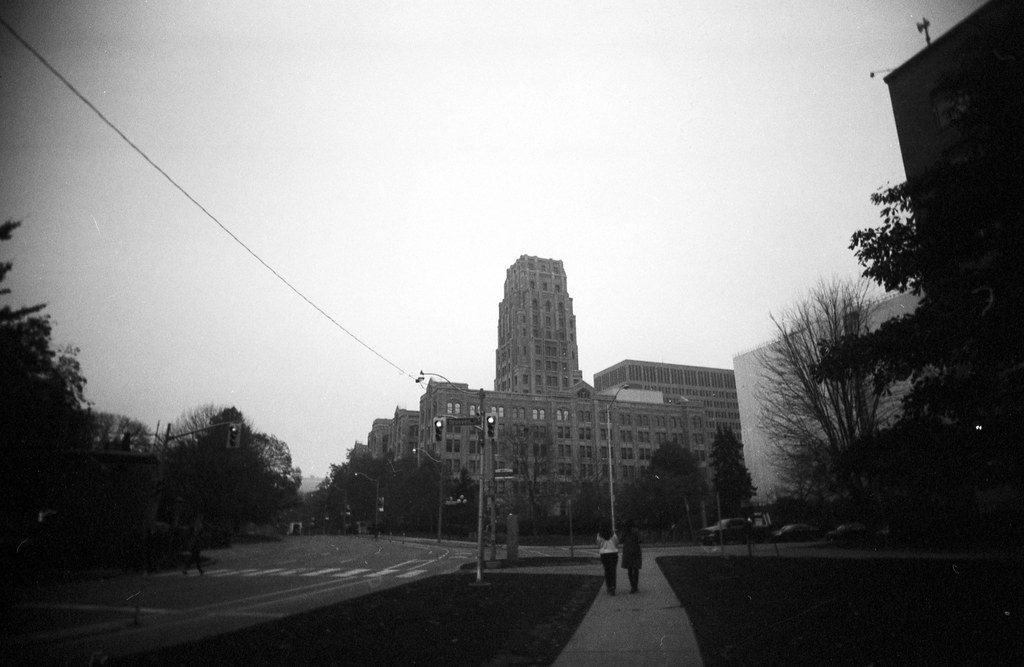


Experiences
If you have never worked with a toy or a trash camera, the RUWS will frustrate or enthral you. On the frustrating end, the camera is light cheap and doesn’t do anything beyond what it says on the tin. It will enchant you for all the same reasons but gives you a look that is almost impossible to duplicate digitally. This is another ‘ish’ camera; it’s 22mm “ish”, it’s f/11 “ish”, and it’s 1/125″ “ish”. The film advance has spacing issues; the frame counter isn’t always accurate, and it is hard to see which frame you’re shooting. Loading the film is straightforward, pop open the back, load the cartridge, draw the leader across and slip it onto the slot. Then advance away after closing up the back; it will take one or two cycles to get to that first frame. The viewfinder is not needed; it works but has no assistance for correcting for parallax or composing. I use it when I remember to. Usually, I shoot from the hip and trust that the 22mm will catch the whole scene. Which it usually does. The film advance is rough, and the camera does suffer from frame spacing issues, but I haven’t seen anything too serious. The one thing that the RUWS does fix is the film advance; I have now twice shot a full 36-exposure roll through the camera without issues. That being said, things start to get rough once I get to frame 30. It might be best to stick to 24-exposure rolls. Then it’s a matter of getting out and using the camera; there’s nothing to adjust, no focus, aperture or shutter speed. So you do have to gear your film to the situation at hand. But with most b&w and colour negative films, you have plenty of wiggle room; also, you can increase and decrease your development time to compensate. For example, on a bright sunny day, shooting an ASA-50 film will do, but if working in mixed light, an ASA-100 film is better. Under duller conditions, an ASA-400 film will be better. Finding that sweet spot for the camera will take a bit of practice. Once you’ve shot your roll, press the sprocket release on the bottom and crank away. Be gentle, the rewind knob is flimsy, and you will hear clicking and think you’re tearing the sprockets; that is how the camera sounds and is perfectly normal.
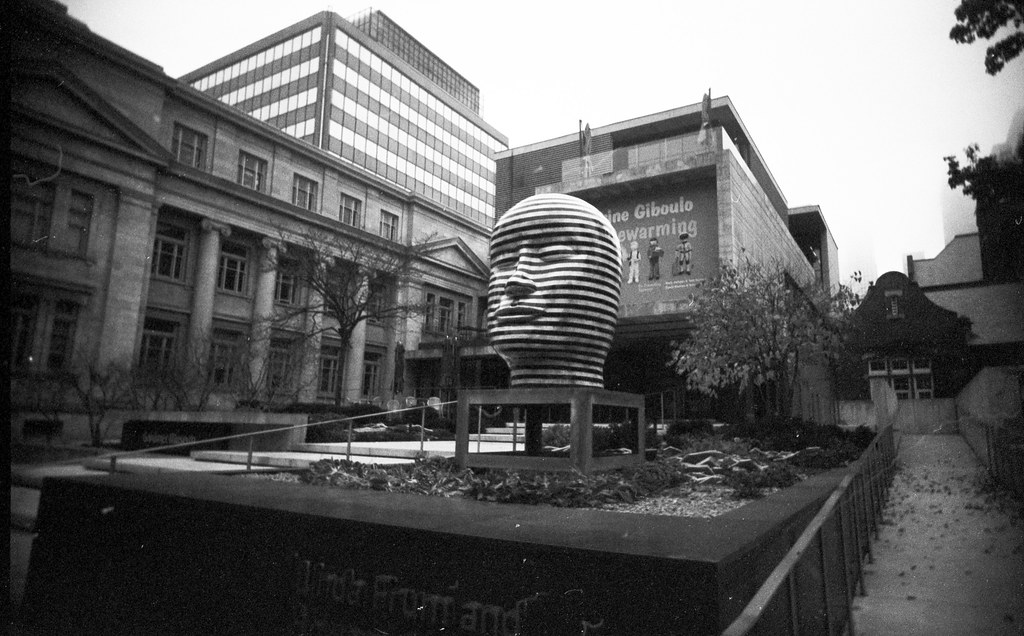

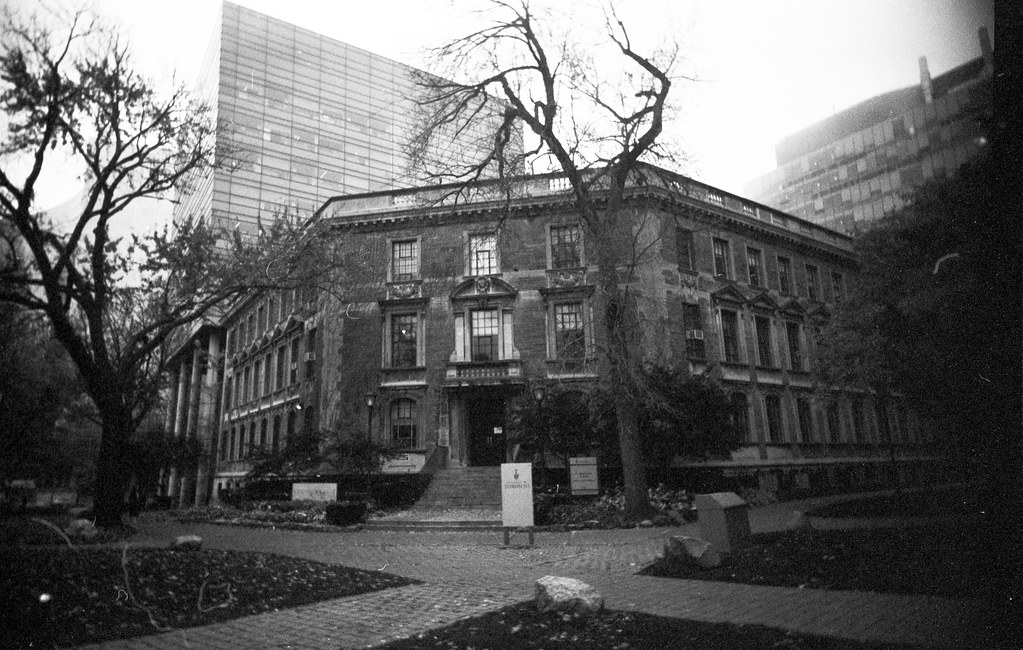
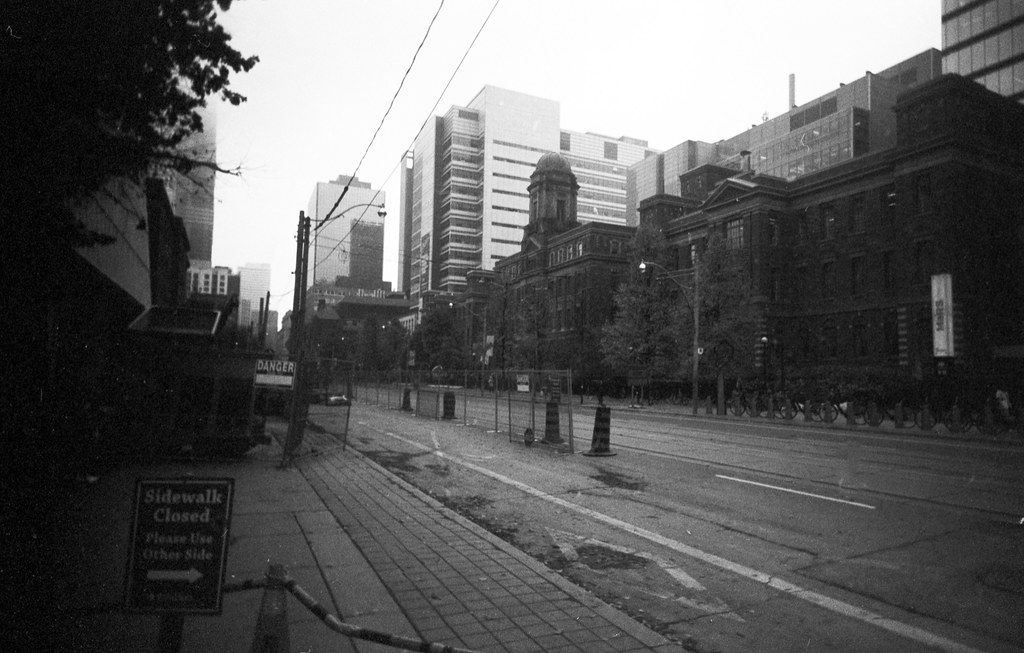
Optics
Here is where the RUWS is a surprising gem, most toy cameras with plastic lenses have a slightly wider-than-normal and are a single plastic element. Single-element lenses can produce some fantastic results, but the RUWS is different. First, the 22mm focal length is an ultra-wide lens, which is already a big selling point for me. Combine that 22mm with an f/11 aperture which means that almost everything will be in focus from end to end. But this is not a single-element lens; the lens is a two-element doublet. Doublet lenses are nothing new; they are often combined to form triplet or achromat lenses, but I’ve used a few older cameras that only have a two-element lens, and you can get a good-quality image out of the lens. You will find that the lens is sharpest at the centre, but the circle is much larger than the Holga 120N with a single element. There is some vignetting at the corners, but nothing too serious, but there is a lovely fall-off before the vignetting. If you keep your distance, there’s only a little bit of distortion, but when you get into that close focus zone, around 1.25m, you can see some barrel distortion which is challenging to fix in post-processing.
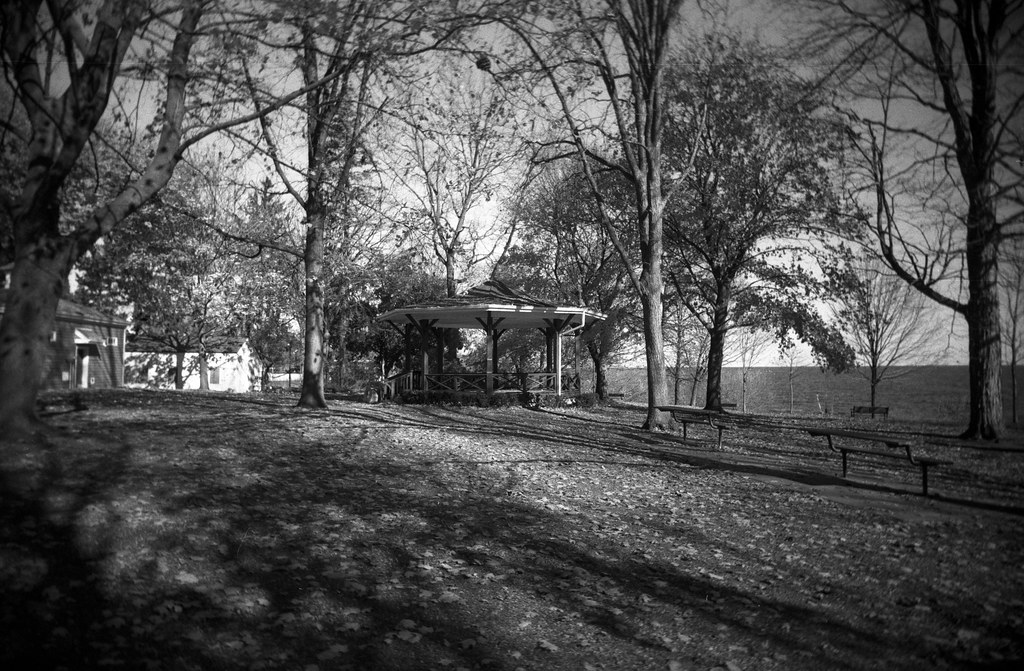



Lowdown
One of the strangest things I can say about the Ultra Wide & Slim line of cameras is that if you’re looking for one, RETO is the way to go; you can get a brand-new camera for 30$ USD. This isn’t a bad price for what this camera is, especially when you put it up against the price that the original Vivitar is fetching on eBay, most running between 50-75$ and some even more. And don’t go to the secondary market for the RUWS; you’ll pay more for a used copy than a new one. Is this camera for everyone? The simple answer is no. If you’re not into the toy camera, this is exactly what the camera is; it’s all plastic down to the lens. I doubt there is a single bit of metal in the whole camera. But if you’re looking for a camera that is simple to use, offers up a unique optical result and is okay with the build quality, then it is undoubtedly a worthwhile toy to add to your kit. Because it’s not always about optical performance or perfect exposure, sometimes you want a camera you can swing up and shoot from the hip.
Further Reading
Don’t just take my word on the RETO Ultra-Wide & Slim; you can check out the reviews by other awesome camera reviewers!
Down The Road – RETO Ultra Wide And Slim
Austerity Photo – Old Meets New: The Original VUWS and the RETO UWS
Emulsive – Mini-review: The RETO Ultra Wide & Slim – Experiences and a Change in Attitude to P&S Cameras
Random Camera Blog – The RETO Ultra Wide & Slim – All Hail the Return of the Classic
My Favourite Lens – RETO Ultra Wide & Slim 35mm Camera Review
Natalie Park – RETO Ultra Wide And Slim Review
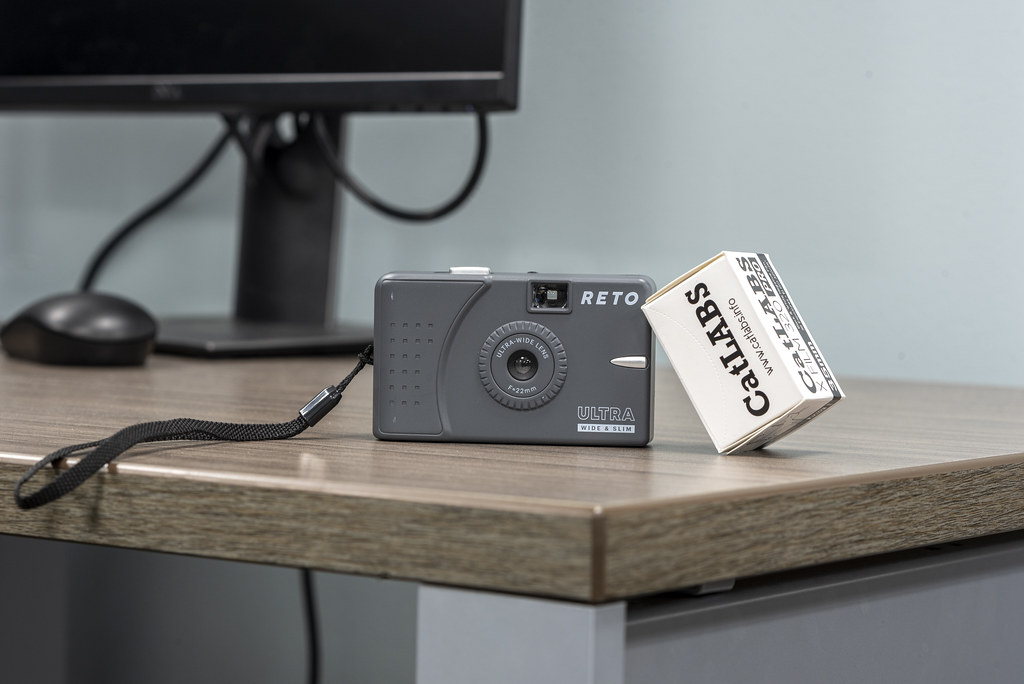

1 Comment